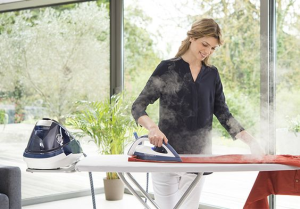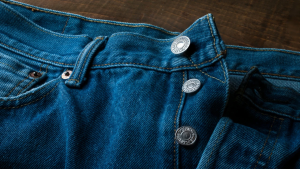How to Shrink Jeans: Quick Guide to Perfect Fit!
How to Shrink Jeans
Jeans are a staple in almost everyone’s wardrobe, offering comfort, style, and durability. However, sometimes, we may find that our favorite pair of jeans has stretched or loosened over time, losing its initial fit. In such cases, the option to shrink your jeans becomes a viable solution to reclaim that perfect fit. This article will guide you through the steps of how to shrink your jeans effectively, ensuring you get the fit you desire without compromising on the quality.
Understanding the Fabric Composition
Different types of denim fabric react differently to various shrinking methods. Denim, the material typically used for jeans, can be made of pure cotton or blended with other fibers like polyester or elastane. Each fabric composition has its unique properties and reactions to shrinking techniques. For instance, pure cotton denim is more prone to shrinking compared to blended fabrics.
Understanding the fabric composition of your jeans helps in choosing the right shrinking method to achieve the desired fit without damaging the material. Denim, the primary material for jeans, is typically made of cotton fibers, although blends with other fabrics like polyester or elastane are common as well. Also, read about The Splash Fashion
Cotton:
Cotton is the most prevalent material for jeans, prized for its exceptional durability, breathability, and absorbency. This natural fiber is derived from the cotton plant, making it a highly sought-after choice for various garments, including jeans. Its ability to breathe and absorb moisture contributes to the overall comfort of denim jeans.
Polyester:
Polyester is frequently blended with cotton in denim production to elevate durability and reduce the likelihood of wrinkles. As a synthetic fiber, polyester enhances the fabric’s resilience, ensuring the jeans retain their shape and appearance even with prolonged use. Additionally, polyester content in denim decreases the fabric’s susceptibility to shrinkage during washing.
Elastane (Spandex):
Elastane, commonly known as Spandex, is a synthetic fiber crucial for providing stretch and elasticity to jeans. By incorporating elastane into denim, the jeans acquire flexibility and comfort, allowing ease of movement. This synthetic fiber is often blended with other fabrics to achieve the desired level of stretch in modern jeans, enhancing their wearability.
Rayon:
Rayon is occasionally utilized in jeans to introduce softness and improve the drape of the fabric. As a semi-synthetic fiber derived from wood pulp, rayon offers a unique texture and feel when blended with other fibers. Its use in denim contributes to a softer touch and adds to the overall aesthetic appeal, providing diversity in denim fabric options.
Preparing the Jeans for Shrinking
Preparing your jeans before attempting any shrinking process is vital for successful results. This step involves cleaning the jeans thoroughly to remove any dirt, stains, or residues that might hinder the shrinking process. It’s important to ensure the jeans are in their cleanest state before initiating the shrinking process. Additionally, preparing the jeans involves checking for any existing damage or weak points in the fabric, which can be crucial in deciding the best approach for shrinking. Don’t forget to visit our website for interesting information matchefashions.com
Using Hot Water and a Washing Machine
Using hot water and a washing machine is a common and effective method to shrink jeans. Hot water targets the fibers of the fabric, causing them to contract and thus reducing the overall size of the jeans. The washing machine’s agitation helps in evenly distributing the hot water and enhances the shrinking process. This method is particularly effective for jeans made of predominantly natural fibers like cotton.
Utilizing a Dryer for Further Shrinking
The dryer is a powerful tool in the jeans shrinking process. After washing the jeans in hot water, transferring them to a hot dryer amplifies the shrinking effect. The combination of heat and mechanical action in the dryer works to further contract the fibers, resulting in a more pronounced reduction in size. However, it’s important to monitor the process closely to prevent over-shrinking or potential damage to the fabric.
Employing Boiling Water for Stubborn Areas
In some cases, certain areas of the jeans may resist shrinking through regular methods. For these stubborn areas, employing boiling water can be effective. By directly applying boiling water to the resistant areas and subjecting them to heat, the fibers in these regions contract, enabling you to achieve a more uniform and desired fit.
The Role of Ironing in Shrinking Jeans
Ironing plays a crucial role in the jeans shrinking process. Heat from the iron can assist in further contracting the fibers, aiding in achieving the desired size. However, it’s important to use the iron on a suitable heat setting and avoid excessive ironing, which could potentially damage the fabric. Properly ironing the jeans after the initial shrinking steps can help refine the fit and ensure uniform shrinkage.

Other Natural Shrinking Methods
Apart from using machines and heat, there are natural methods to shrink jeans. These methods involve using natural agents like vinegar, lemon juice, or a saltwater soak to affect the fabric’s fibers. Although these methods might take longer to show results compared to machine-based techniques, they offer a more gentle and organic approach to shrinking, making them suitable for delicate fabrics or for those looking for eco-friendly alternatives.
Common Mistakes to Avoid
Avoiding common mistakes in the shrinking process is vital to achieving the desired fit and maintaining the integrity of the jeans. Mistakes can include using excessively high heat, over-agitating the fabric, not properly preparing the jeans beforehand, or neglecting to monitor the process closely. Learning from these errors helps ensure a successful shrinking experience and prevents potential damage to your jeans.
Tips for Maintaining the Shrunken Size
After successfully shrinking your jeans, it’s essential to adopt practices that help maintain the shrunken size. These tips include washing in cold water, air drying, avoiding ironing, and storing the jeans carefully to prevent unnecessary stretching. Following these tips ensures that your jeans retain their ideal fit for a longer duration. Here are some tips to ensure your jeans retain their ideal fit:
Cold Water Wash:
When it’s time to wash your shrunken jeans, opt for cold water. The cold water helps in maintaining the shrunken size, as hot water can reverse the shrinking process and cause the fabric to stretch again. By using cold water, you ensure that the fibers remain compact and the fit stays as desired.
Gentle Cycle:
Choose the gentle cycle on your washing machine while laundering shrunken jeans. This cycle minimizes unnecessary agitation, which could potentially stretch the jeans. By opting for a gentle wash, you’re ensuring that the fabric is handled delicately, preserving the shrunken size.
Air Dry:
Instead of using a dryer, opt for air-drying your jeans. The high heat from the dryer can relax the fibers and lead to stretching, undoing the shrinking effect. Air drying allows the jeans to maintain the shrunken fit achieved through the shrinking process.
Avoid Ironing:
It’s important to avoid ironing your shrunken jeans. Ironing involves heat, which can cause the fibers to loosen and expand, potentially altering the size you’ve achieved. Steer clear of ironing to ensure the shrunken fit remains intact.
Fold Carefully:
When storing or folding your shrunken jeans, do so with utmost care to maintain their shape. Avoid creasing or bunching, as this can distort the fit and cause unwanted wrinkles. Careful folding ensures that the jeans retain their desired shape even when stored.
Advantages of DIY Jeans Shrinking
DIY jeans shrinking provides a cost-effective and convenient way to achieve the perfect fit tailored to your preferences. It empowers you to personalize the shrinking process, experiment with various methods, and learn valuable skills while contributing to sustainability by reducing waste. Here are some compelling reasons why DIY jeans shrinking is advantageous:
Cost-Effectiveness:
DIY shrinking proves to be cost-effective, saving you from the expenses associated with professional alterations. The materials and tools required for shrinking are generally readily available and affordable. By choosing the DIY route, you achieve the desired fit for your jeans without straining your budget.
Convenience:
Shrinking jeans at home offers unparalleled convenience. You can undertake the shrinking process at your own pace, without being constrained by a tailor’s schedule or the need to travel to a tailor shop. This flexibility allows you to manage the process according to your own timeline and convenience.
Immediate Results:
One of the significant advantages of DIY methods is the almost immediate results you can observe. Unlike waiting for a tailor’s appointment, you can try various shrinking techniques and witness the results instantly. This real-time feedback allows you to make adjustments and choose the most effective method for your jeans and personal preferences.

When to Consider Professional Alterations
There are instances when DIY shrinking may not be suitable or successful. Seeking the expertise of a professional tailor is advisable if you’re uncertain about the process, dealing with high-quality or delicate fabrics, or need precise alterations for a specialized fit. Professional tailors possess the expertise to resize jeans accurately while preserving the fabric’s quality.
Alternatives to Shrinking Jeans
Shrinking may not always be the best option, depending on the jeans’ fabric or your preferences. Alternatives include cinching techniques with belts or using sewing alterations to achieve a better fit. Exploring these alternatives ensures you find the most appropriate method to achieve your desired comfort and style.
Eco-friendly Approaches to Resizing Jeans
In line with increasing environmental consciousness, exploring eco-friendly approaches to resizing jeans is essential. These approaches focus on sustainable practices, using minimal resources, and minimizing waste. By adopting these methods, you contribute to a more sustainable fashion industry and reduce your environmental footprint.
Conclusion
Mastering the art of shrinking jeans through DIY methods provides a cost-effective, convenient, and highly customizable solution to achieving the perfect fit. It empowers individuals to tailor the process to their specific needs and preferences, ensuring a unique and personalized outcome. The immediate results obtained through DIY shrinking, without the need for professional alterations, make it an attractive choice.
FAQs
Q: Can all types of denim be shrunk?
A: Most denim can be shrunk, but the degree of shrinkage may vary based on the fabric composition.
Q: Are there any risks in attempting to shrink jeans at home?
A: Yes, improper shrinking methods can damage the fabric and alter the color or texture of the jeans.
Q: How many times can you shrink a pair of jeans?
A: It’s best not to repeatedly shrink jeans, as it can lead to excessive wear and tear on the fabric.
Q: Can shrinking jeans cause them to lose their shape?
A: Shrinking using proper methods should retain the jeans’ shape while reducing size.
Q: Is it possible to unshrink jeans?
A: Unfortunately, once jeans have been shrunk, it’s challenging to revert them to their original size accurately.
